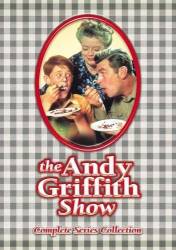The Case of the Punch in the Nose - S5-E25
Other mistake: In the shots from outside the courthouse, when the front door is opened there's a wall where none should be, presumably to prevent seeing inside the courthouse facade.

Starring: Ron Howard, Don Knotts, Andy Griffith, Frances Bavier
The Case of the Punch in the Nose - S5-E25
Other mistake: In the shots from outside the courthouse, when the front door is opened there's a wall where none should be, presumably to prevent seeing inside the courthouse facade.

Visible crew/equipment: When Otis tries to escape from Aunt Bee's clutches by hiding in the laundry service van, just as Aunt Bee has the driver open the van's back doors we can see the reflection of the moving boom mic in the left window.
Opie's Group - S8-E9
Andy: Clara, sometimes a parent can't see what he should do, and sometimes it takes a person from the outside to show him. And I'd like to thank you.
Clara: Groovy.
Trivia: Jack Dodson, who later played Howard Sprague, was originally cast to play Ed the Insurance man in an earlier episode called "Lost and Found".
Question: Who was Ralph Henderson?
Separate from membership, this is to get updates about mistakes in recent releases. Addresses are not passed on to any third party, and are used solely for direct communication from this site. You can unsubscribe at any time.
Check out the mistake & trivia books, on Kindle and in paperback.
Answer: In S3 x E11 Convicts-at-Large, there is a character named Big Maude Tyler, who is the leader of three female escaped convicts. Andy listens to the radio as the news announcer says that Big Maude's aliases include Clarice or Annabelle Tyler and also one amusingly named Ralph Henderson.
Super Grover ★